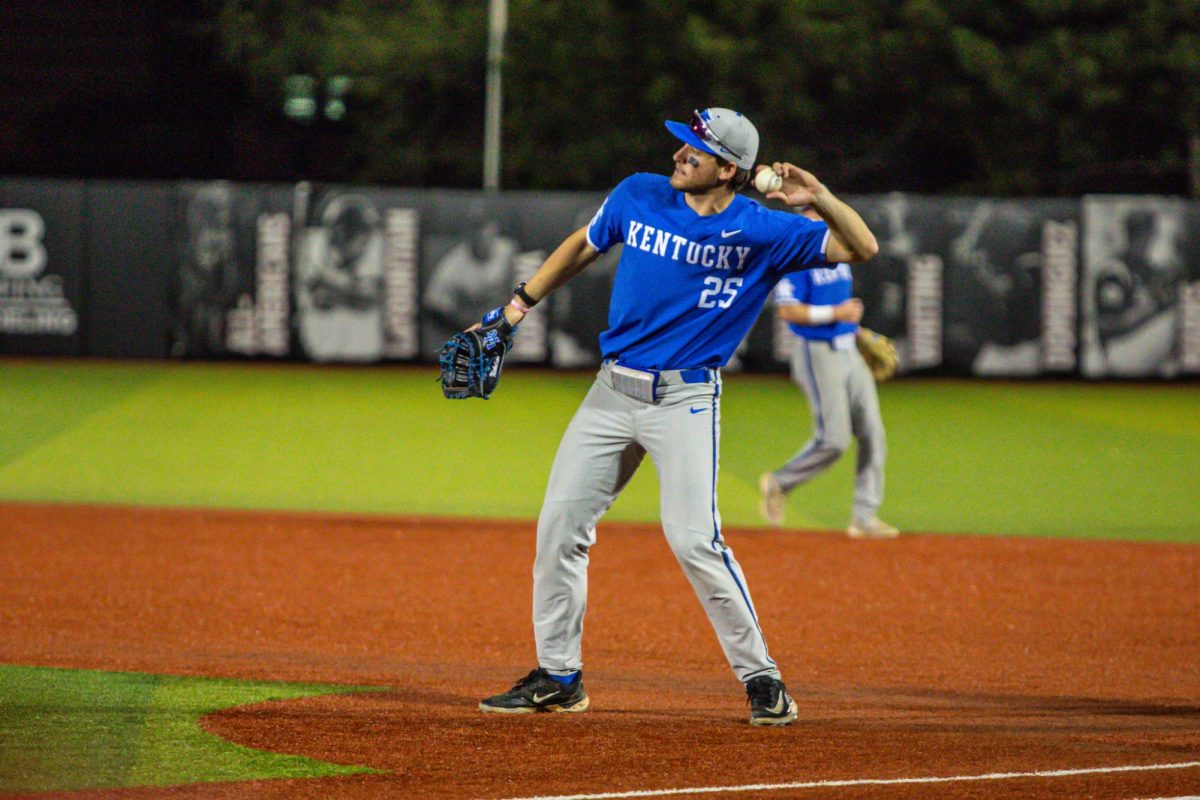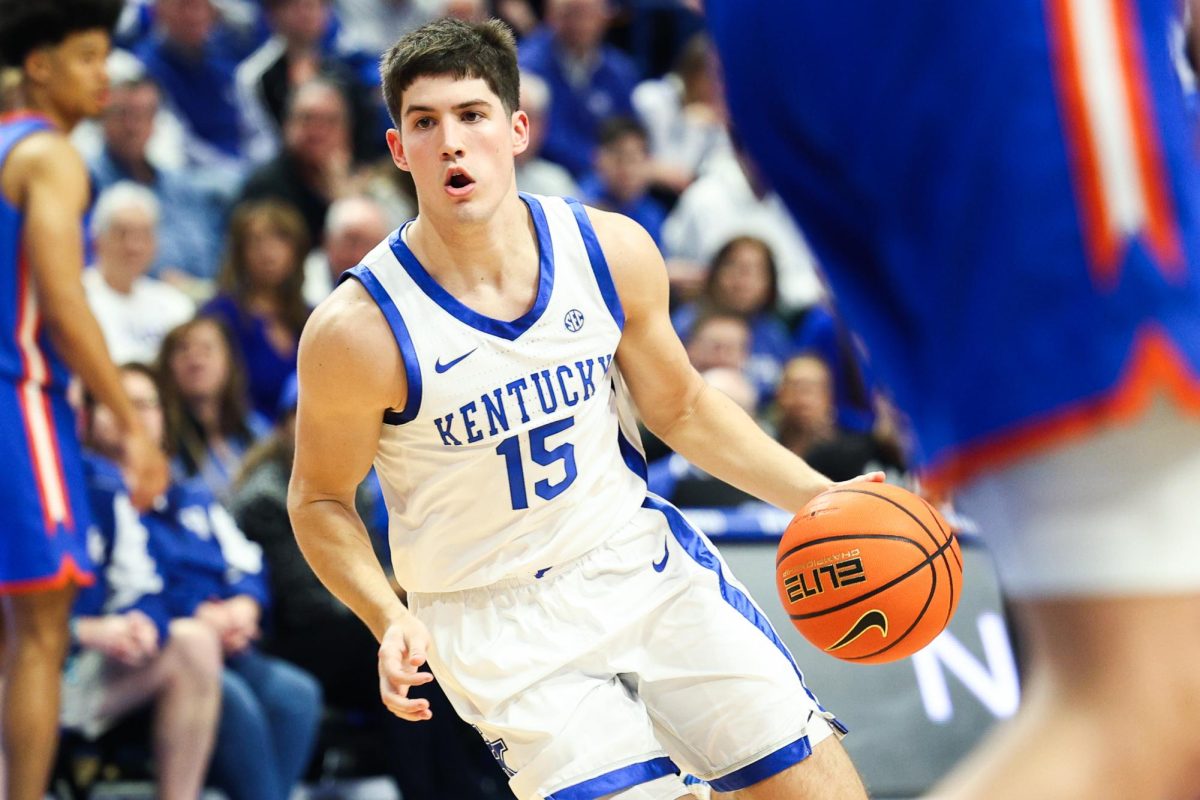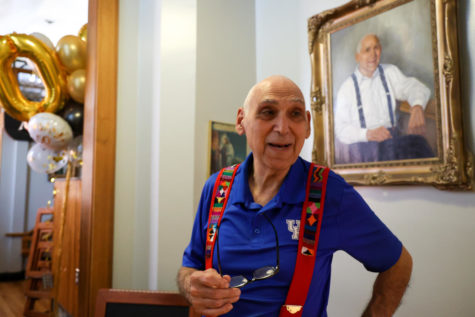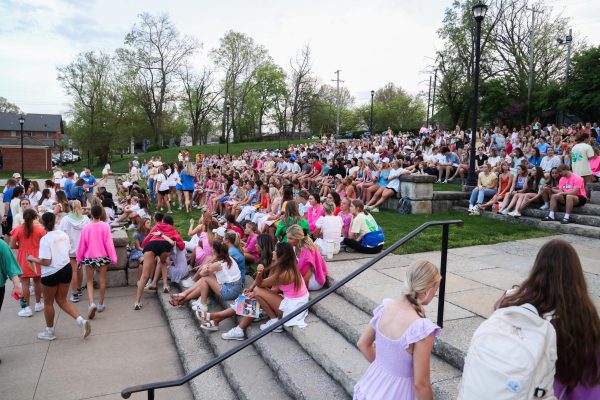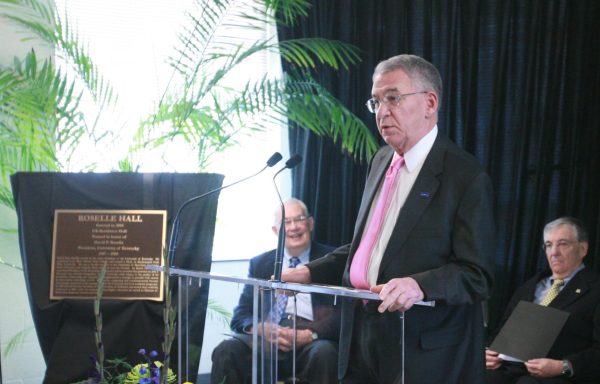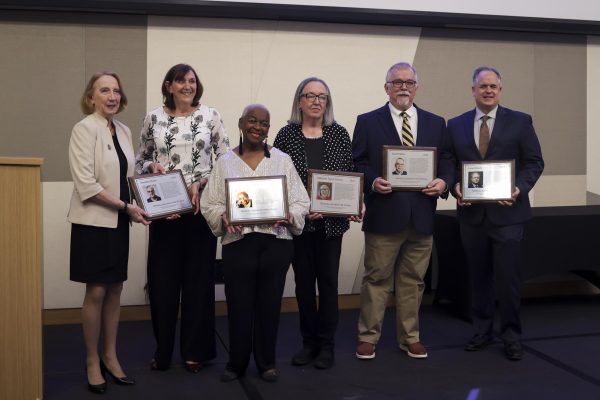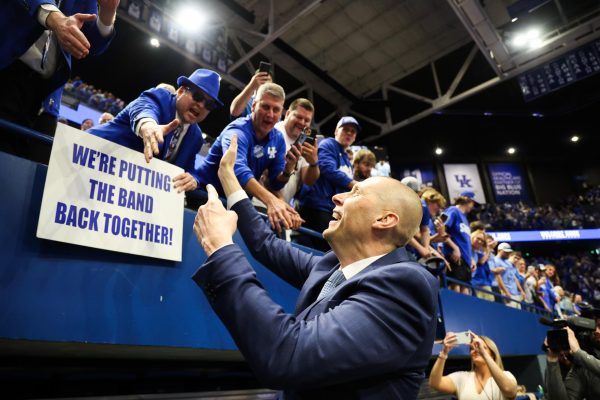UK utilizing new ways to recruit
November 7, 2013
By Laura Shrake
UK recruiters start off every year by hitting the road to meet high school students.
They visit every high school in Kentucky, and travel to target locations as far north as Chicago and Cleveland, as far west as St. Louis and as far south as Atlanta.
“Each year we have goals of where the university wants to go,” said Stephen Barnett, senior associate director of Admission and Associate Registrar. “(We look at) what type of goals we are going for, how many students we want, what we have done historically.”
As the commonwealth’s flagship institution, Barnett said UK wants to be every Kentucky students’ first choice. But they also look out of state, including the Cincinnati, Dayton, Columbus and Cleveland areas in Ohio, and in the Chicago area as well.
“We are constantly looking for numbers,” Barnett said. “It’s a numbers game (to compare) where you’ve been and where you want to go. (We) watch all the numbers to have an idea of where we need to be.”
To gauge these numbers, the university has many programs, initiatives and a budget of approximately $1 million per year to communicate with prospective students. These programs include Come See Blue For Yourself, Merit Weekends and Preview Nights.
“With any type of recruitment event, we want students to experience a diverse campus,” Barnett said. “We know they’ll meet people with similar beliefs, but the thing that’s important about going to college is meeting people who are different from you.”
Emmett Buzz Burnam, Director of recruitment and diversity initiatives, said that with events like Come See Blue For Yourself, students are able to get a sense of the opportunity that UK has to offer them.
Specifically, Burnam looks at diversity student recruitment, including African American, Latin American, Hispanics and first generation students, and making a “university commitment to diversity.”
“For diversity students (like) first generation students, their exposure is so important,” Burnam said.
Letting students see what the school can do for them, beyond what they have heard is what Burnam notes as an important aspect of the university’s recruitment.
Other aspects of recruitment at UK include mailings and digital communication.
“We try to have a good mix of email communication with mail communication,” Barnett said. “We’ve heard from students who have liked the mix of what we’re doing.”
Recruiting is paired with the university’s marketing department, which Barnett said has helped them come up with some creative ways to be unique in the eyes of high school students. Some of these ways include sending students car decals, beach towels and water bottles.
“Some people have the mindset that everything should be done electronically,” Barnett said. “We’ve found that students appreciate getting information in the mail. Simply saying ‘hey we think you should know about this’ … gives them more knowledge than something you delete online. We don’t want the messages to get lost.”
To make sure the university is providing the messages the students want to hear, UK conducts research to be up-to-date on what students want to know about.
“Over the years we have talked to prospective students and look at what (they’re) telling us,” UK spokesman Jay Blanton said.
What they have found is that students are looking for what kinds of majors are offered that will lead to jobs in the future. They also are curious about the quality of majors and the academic institution as a whole, as well as the cost and availability of scholarships and financial aid.
Although Blanton said nothing will replace word-of-mouth and how students communicate with each other and their parents about college, he said students have given them feedback about their preferred methods of contact.
“Students like to get personalized, customized mail,” Blanton said. “(But they are) increasingly interested in how we reach them through technology.”
Blanton said marketing is an evolutionary process in which they must be constantly looking at what works and what doesn’t and being responsive to the customer—which in this case is the student.
Technology plays a large role in recruiting and the evolution of marketing.
“From a media and marketing perspective, you can measure the return on investment,” Blanton said. “(You can) know whether someone clicked on an ad on Facebook and then applied because of that ad. I know what that investment led to.”
The university has accounts on many popular channels, such as Facebook, Twitter, Google+, Instagram and Pinterest.
Students have seen firsthand the effectiveness of using online methods and more traditional methods like tours and mailings to communicate with the university.
“I follow (UK) on Facebook,” nursing freshman Jenna Doud said. “It catches my attention (and) is effective because I use social networks.”
Despite the increasing use of technology, Blanton said the most important piece of recruiting has stayed the same—putting a student in touch with someone at the university.
Ultimately, the recruiters’ work pays off for students making their college decision.
“It takes a lot of work and travel, but we love doing it,” Barnett said. “It makes it fun to see (students) enroll in the university and enjoy their time here.”










































